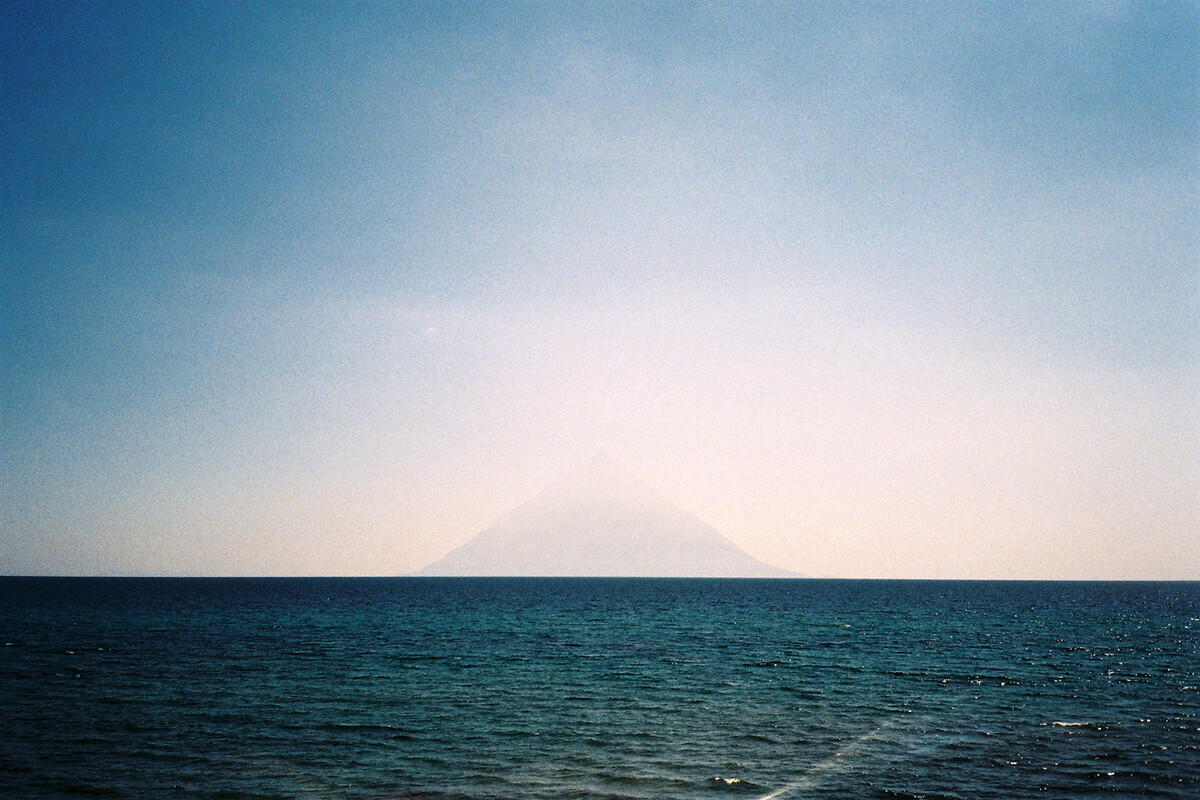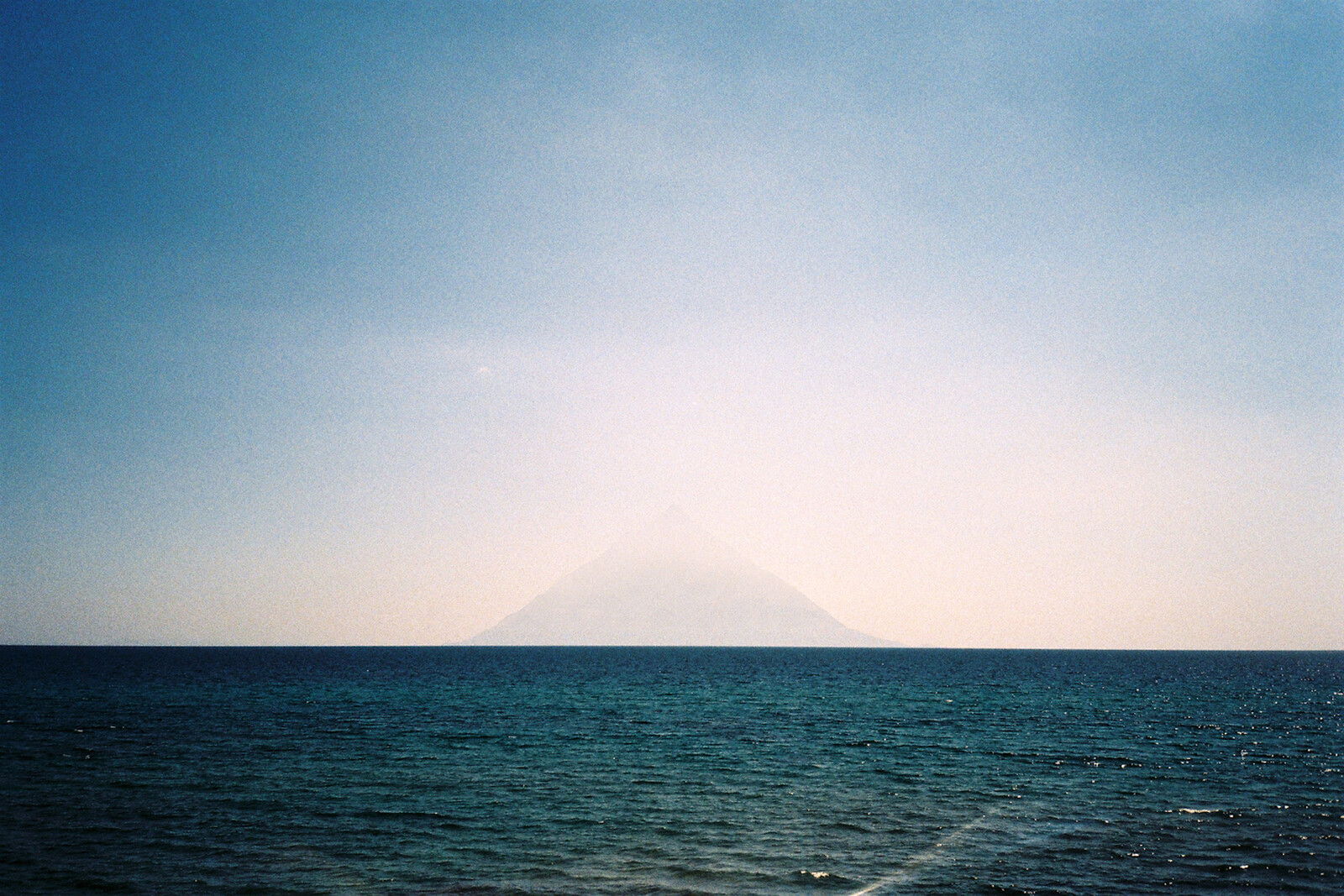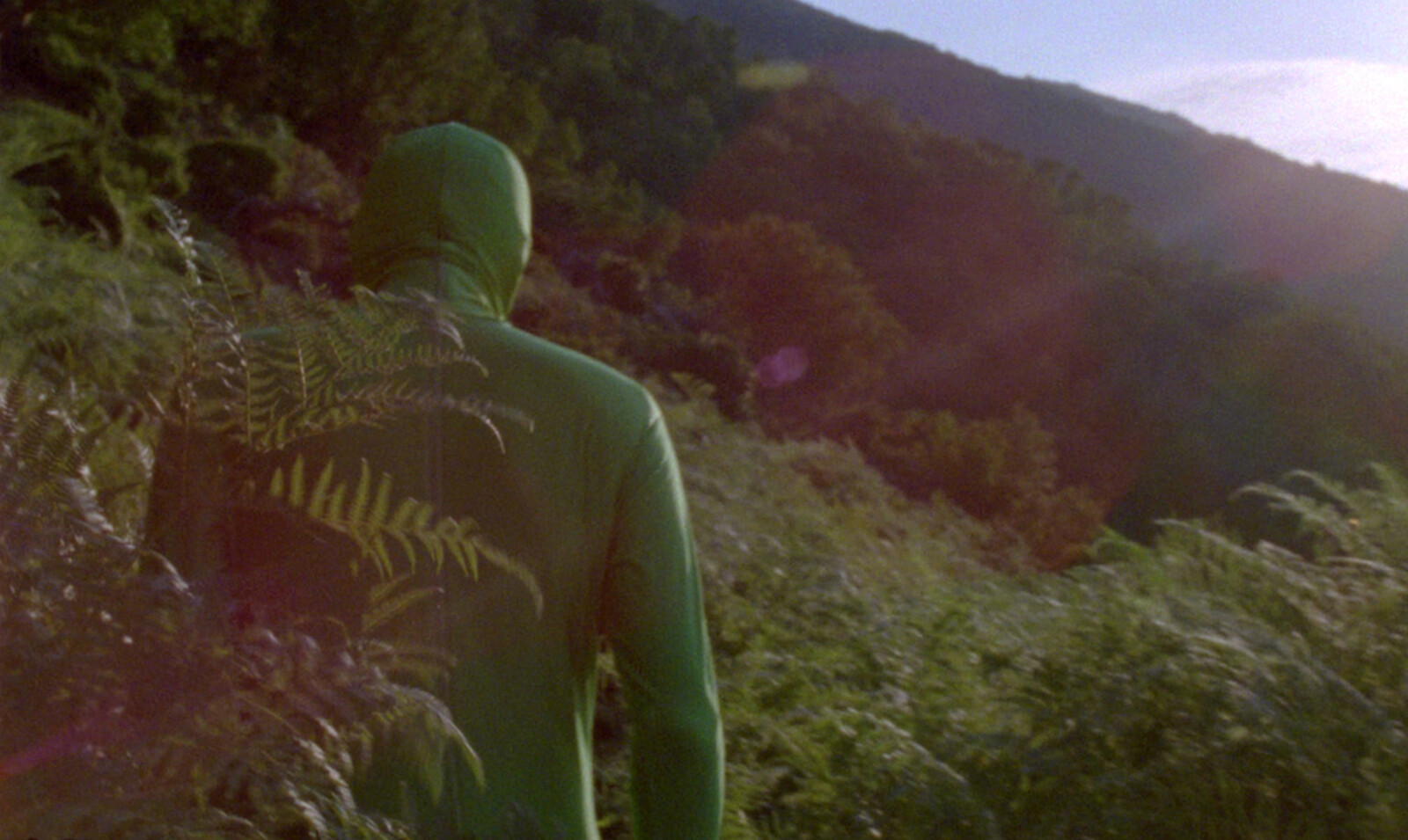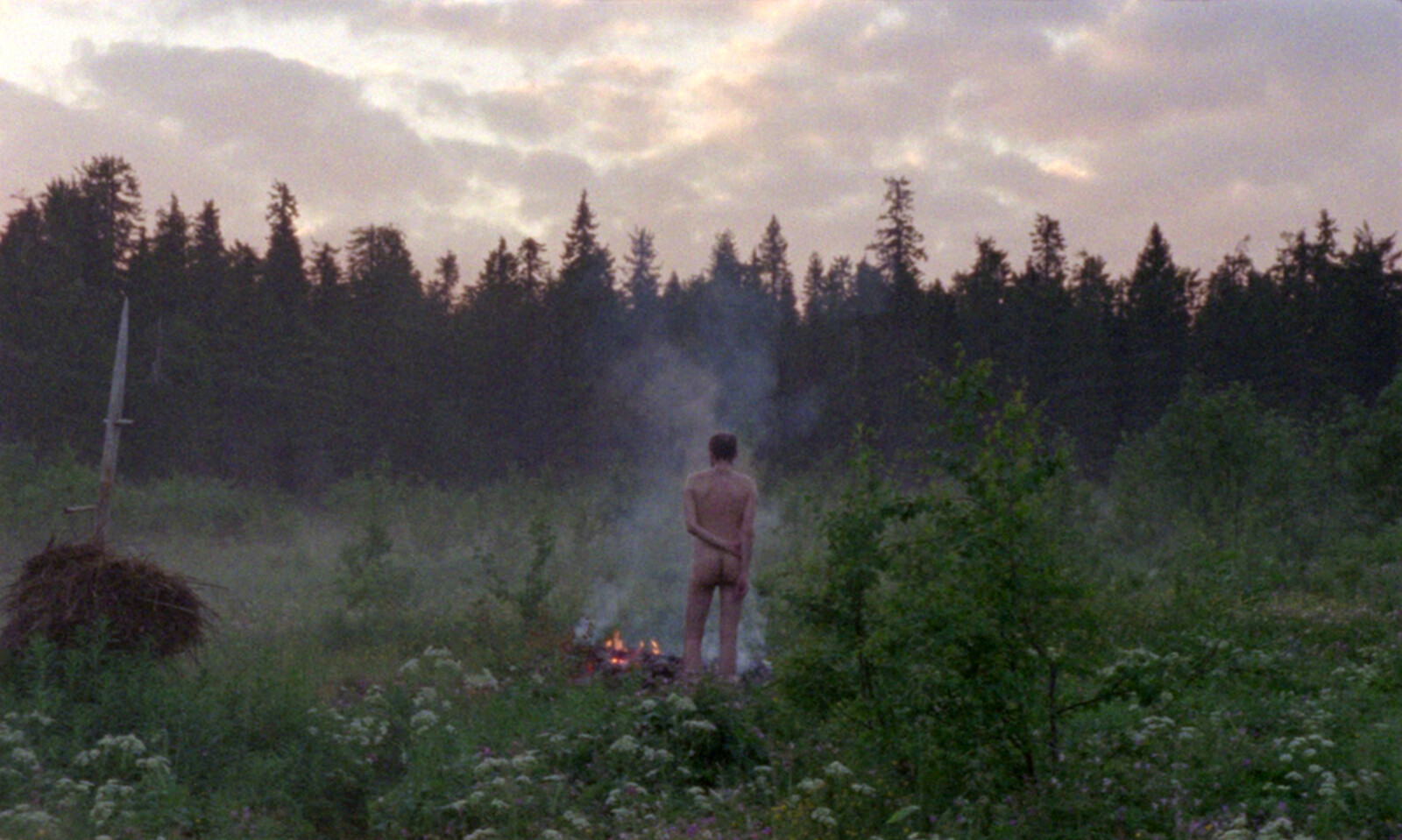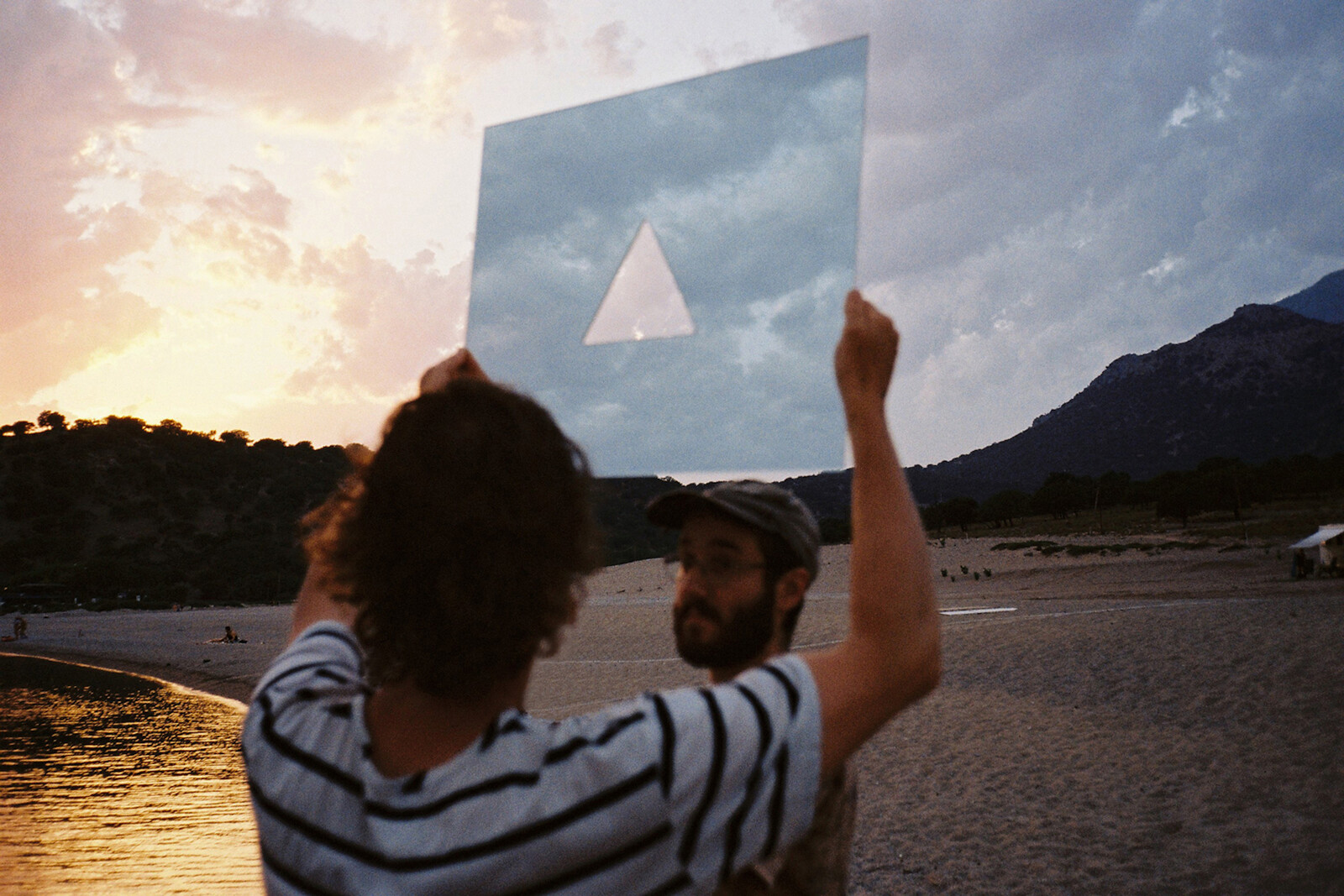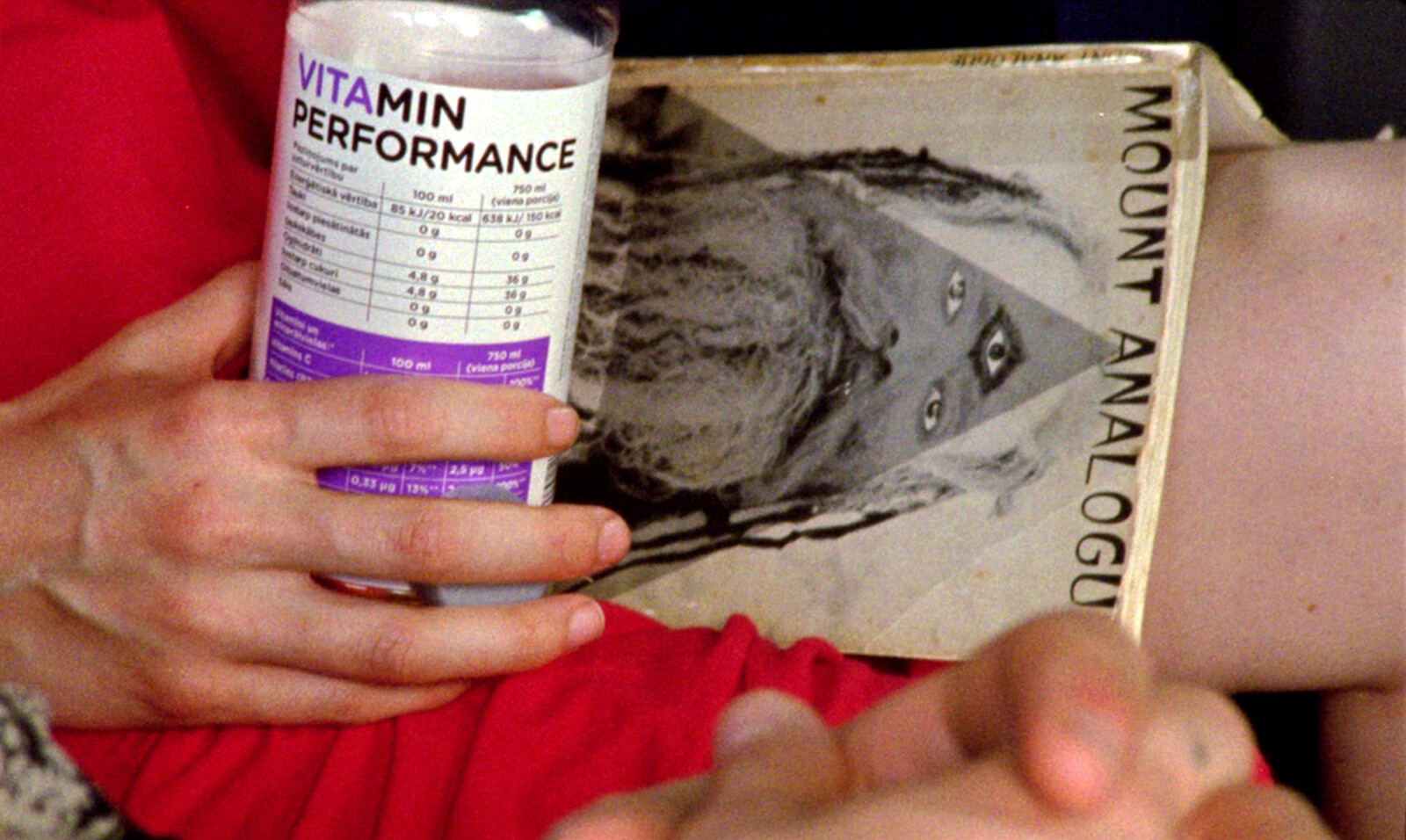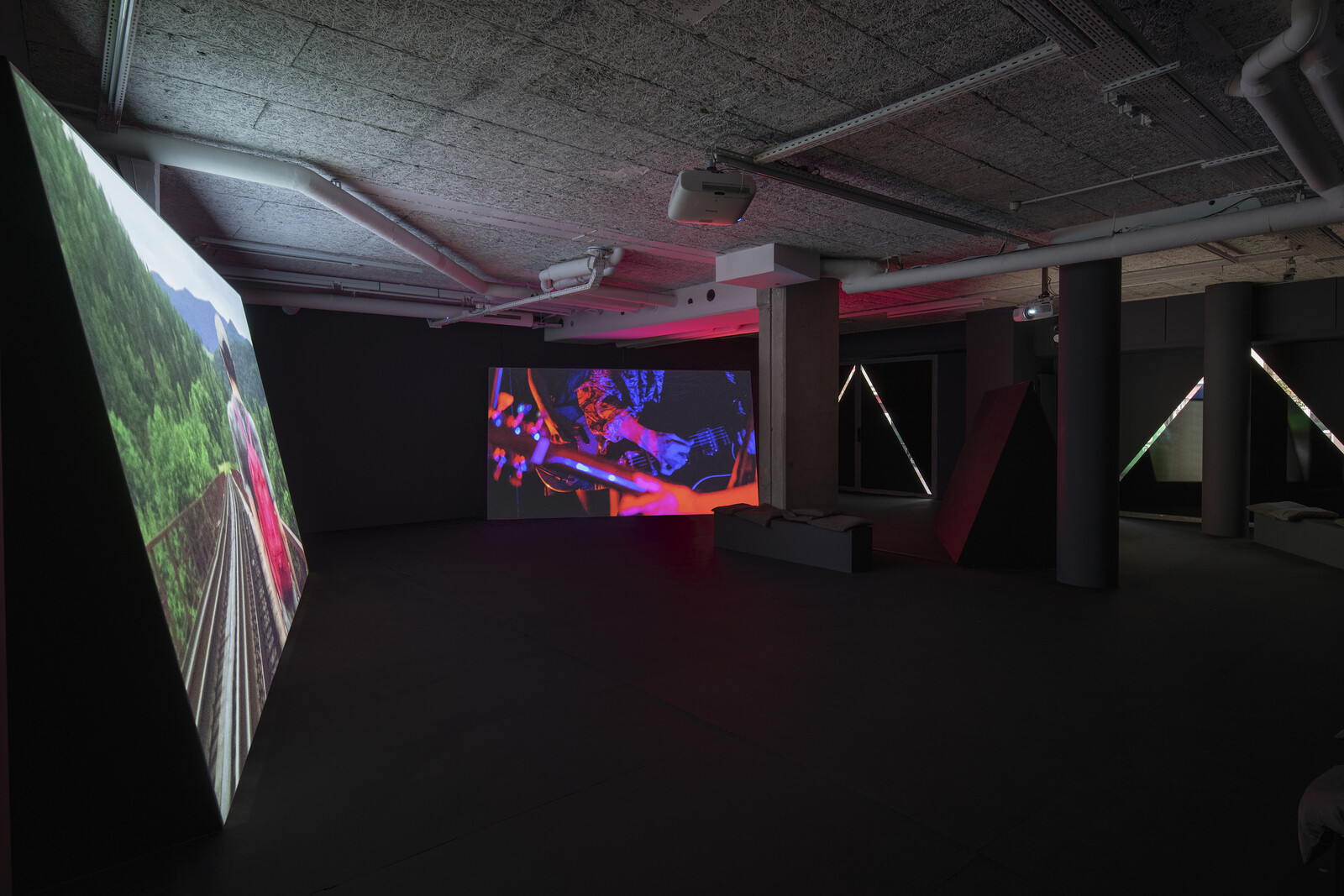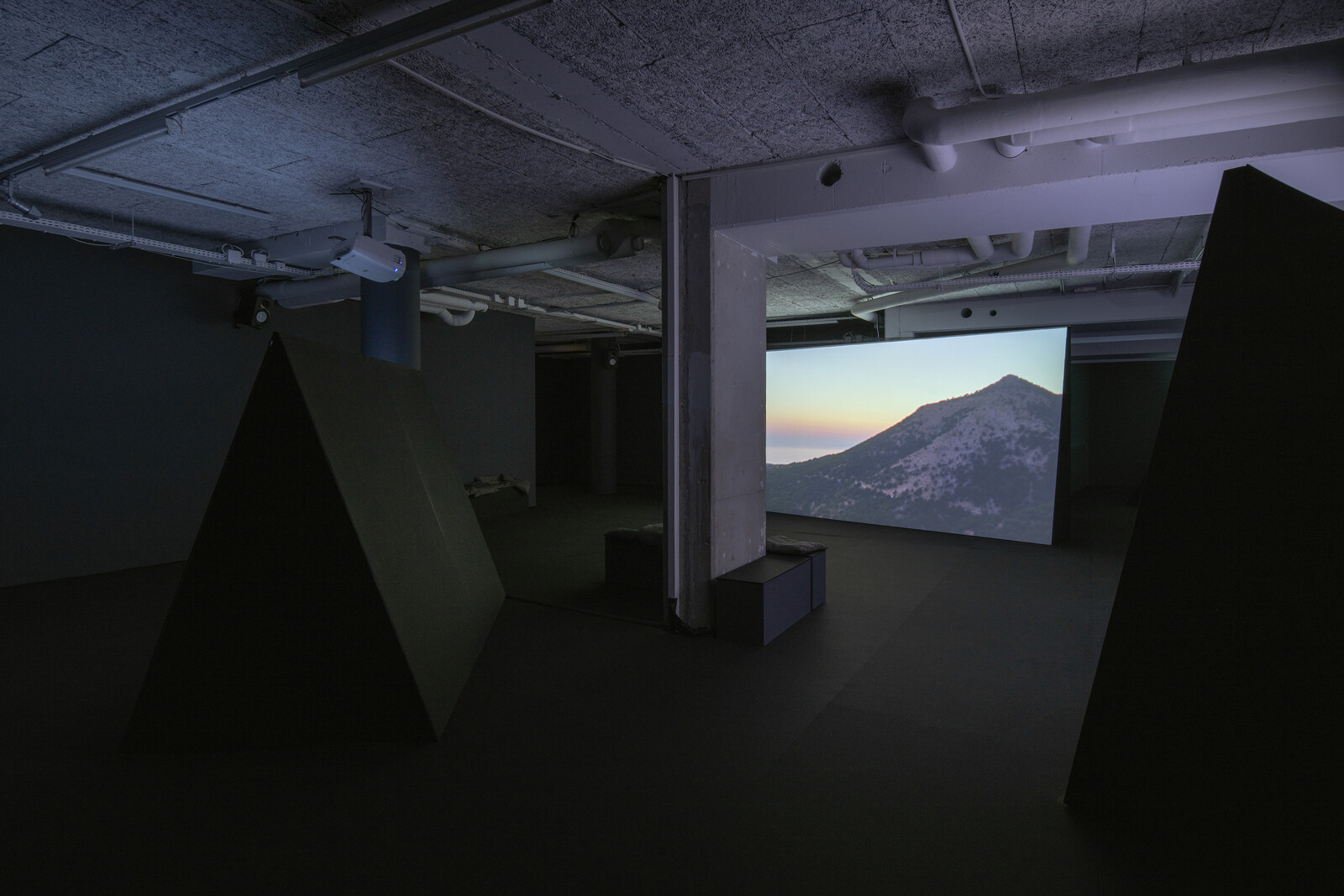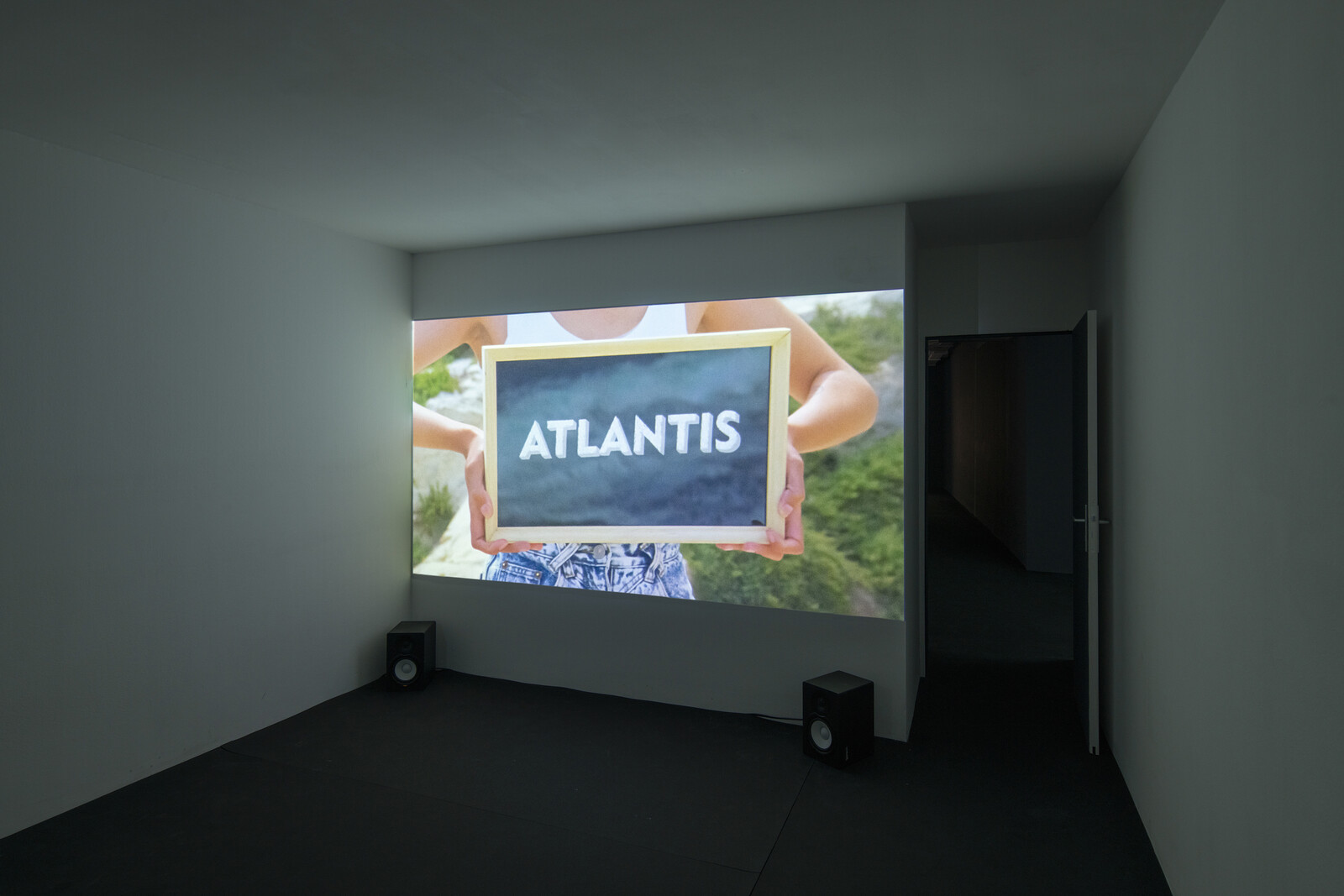In its afterlife, an exhibition assumes different shapes. Once a show has come to an end—its artworks assessed, wrapped, and shipped, walls repainted, and artists, curators, and assistants moved on to a new project—what remains is a complex patchwork of individual and collective memories, embodied by a single object, a display, or an atmosphere. In its afterlife, an exhibition acquires a mythical dimension, and is capable of generating an imaginary that others can adapt, transform, and expand.
Ben Russell’s “La Montagne Invisible,” on view at Paris’s Le Plateau, will leave its viewers with the long-lasting impression of an atemporal, non-Euclidean journey shaped by subtle but fantastic events. With no obvious beginning or end, this exhibition-made trip unfolds in a cavernous environment and is punctuated by arcane light symbols that shine in the dark. The show, one instalment in a multi-part project that Russell is developing (the first of which, “LA MONTAÑA INVISIBLE,” was made in collaboration with composer Nicolas Becker and presented at MUCA UNAM in Mexico City in September 2019), pays tribute to René Daumal’s novel Le Mont Analogue, which describes an expedition to the summit of an invisible mountain, the tallest on earth, which can only be reached by belief. The novel was left unfinished in 1944 when Daumal died of tuberculosis in Paris, and while its characters were just surpassing the foothills. Published in 1952, its combination of spirituality, poetry, and conceptualism has been a source of inspiration for artists including Tacita Dean, Alejandro Jodorowsky, Philippe Parreno, and Patti Smith.
Russell excels in rethinking Daumal’s saga. He acknowledges that it is impossible to share the outcome of an expedition, yet manages to induce in the viewer the outlandish experience of a journey. At the same time, he renders the story universal by transposing it to a concrete context. The work that names the show, La montagne invisible (2020), comprises an installation of five looped videos (super 16mm transferred to HD) exhibited across various areas of darkened exhibition space, some projected onto large triangular volumes that surround visitors like a chain of mountains, others presented on flat screens, which often intersect one another’s images and sounds. Each video offers snippets from a journey in which the artist accompanied and filmed his friend Tuomo Tuovinen’s walk from Finland to Greece. The two of them were joined by various other companions, who participated in this experiment in movement and seclusion. Beautiful footage of Tuovinen placidly swimming in a central European lake is paired with shots of a slender green human figure wandering across lush fern vegetation, waiting to be chroma-keyed to invisibility, or with images of Tuovinen on a beach holding a flat surface with a triangle cut in the middle towards the camera: the superimposing of the geometric form both frames the landscape and turns it into an abstract, unreachable mountain. Brought together, these unrelated scenes challenge the traditional progression of a travelogue narrative. Here, the journey is relived, retold, and remembered through disconnected spatial and chronological leaps, whose fragmented nature is skillfully re-enacted by the exhibition’s layered and non-linear arrangement.
This is not the first time that Russell has set out to find a fictional land. In his film Atlantis (2014), projected in a separate room in the show, the artist travelled to Malta to look for the legendary drowned continent, the social and natural reality of the Mediterranean island mirroring and distorting the imaginary of the utopic island society. Running in parallel to the documentation of Russell’s two summer excursions is a new work, Conjuring (2020). This long, black-and-white video projection transforms the sensual and smooth colors, textures, and rhythms of Tuovinen’s journey into an abstract non-place that cannot be grasped but only subliminally perceived through rhythm and sound. If the quest for lands documented in La montagne invisible and Atlantis was shattered into a quasi-cubist interplay of simultaneities and assemblages, with Conjuring it becomes a hallucinatory trip that can only unfold in the viewers’ minds.
“Before setting out for the next refuge, one must prepare those coming after to occupy the place one is leaving,” wrote Daumal of his Mount Analogue.1 With this “Invisible Mountain,” Russell seems to be initiating an enduring ritual in which the fictive and the real, the visceral and the structural, the cinematic and the exhibitionary, are complementary agents of transformation and change.
René Daumal, Mount Analogue (New York: Overlook, 1986), 140
